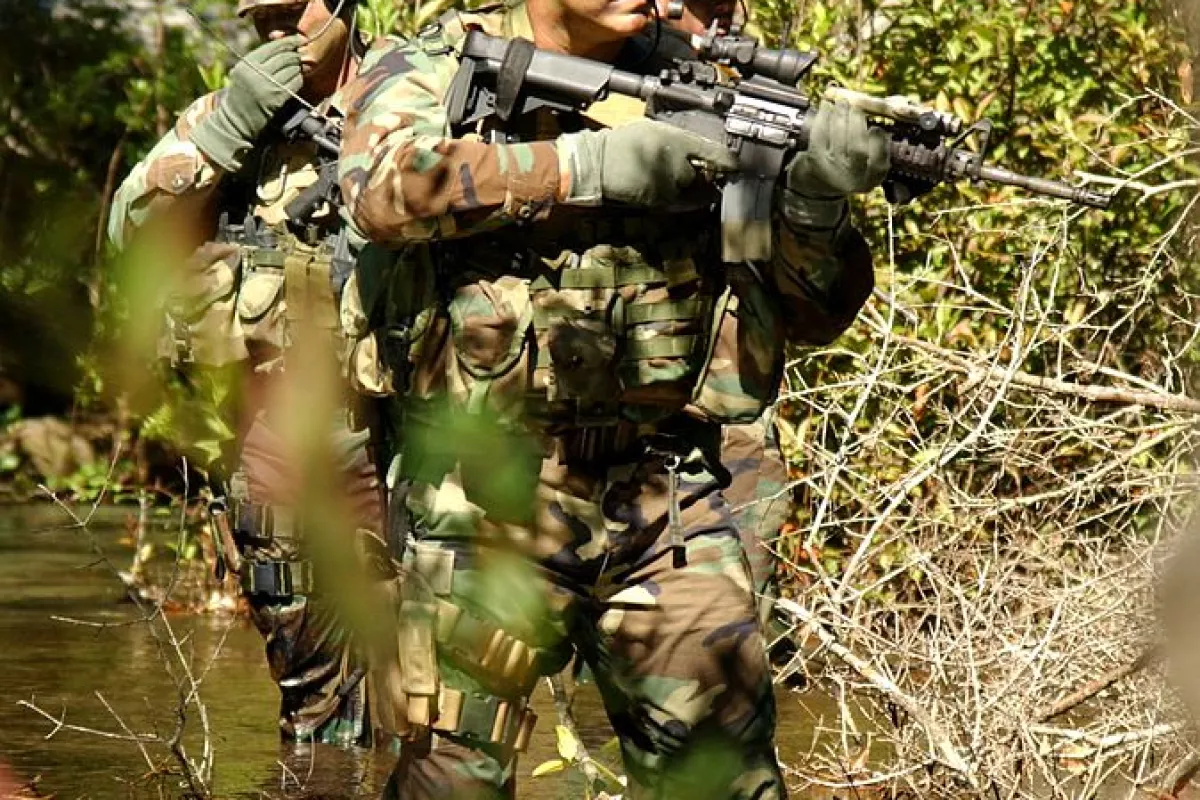Most people have experienced the sonic boom of a skillfully wielded whip, or the closely related crack of a nearby bolt of lightning. Such sounds have a character that attracts a good deal of attention, which is why the US Special Operations Command (SOCOM) is trying to silence them. The crack of a rifle shot is the sonic boom of a supersonic bullet, making stealthy ground missions difficult to accomplish. To address this need, SOCOM has issued a Small Business Innovation Research request for proposal for a feasibility study of suitable subsonic rounds.
In dry air at 20° C (68° F), the speed of sound is about 343 meters per second (1,125 feet per second). If a bullet moves faster than that, it generates a sonic boom. SOCOM-fielded rifles with standard combat loads have muzzle velocities of between Mach 2 and Mach 3, which rather suggests that producing a reliable subsonic round may be a difficult task, especially since the rifles in which these will be fired are designed for the upper velocity of which their cartridges are capable.
The rise of urban warfare against individuals and small groups suggests that a source of reliable, accurate, and (most of all) quiet subsonic rounds is, to SOCOM, a highly desirable goal. However, to date, subsonic ammunition performs reliably only in small caliber silenced pistols, which are unsuited to many missions for which subsonic ammunition would be favored, even transformational. Favored, perhaps, but not easily achieved.
Past experience with subsonic rounds reveals significant accuracy problems, which drives a considerable reduction in effective range. Achieving subsonic velocities requires igniting a very small propellant charge in a rather large cartridge, leading to unsteady burning and erratic chamber pressure. Small chamber pressure can lead to gas leakage from the chamber, and also to a greatly increased chance of having a bullet become stuck in the barrel, rendering the rifle inoperable. Such low pressures are also insufficient to reliably cycle the action on current gas-operated semi-automatic and automatic rifles, raising a strong possibility of jamming during use.
It seems clear that new cartridge technologies must be invented to satisfy these conditions. These might include polymer-based cartridges for improved gas sealing, and sabots for sealing of the barrel while insuring predictable barrel friction and highly accurate performance. The feasibility study will produce an outline of the general approach to developing subsonic rounds.
In later phases prototypes will be developed that demonstrate the successful implementation of the new technologies. Assuming funding remains available, a transition from the prototype cartridges and manufacturing methods to full production of the subsonic ammunition designs will be carried out. Dual use by law enforcement is an additional SOCOM goal. Programs to develop military subsonic ammunition have previously been fielded with a consistent lack of success. Perhaps the continuing flow of materials science and manufacturing advances will change the odds this time.




